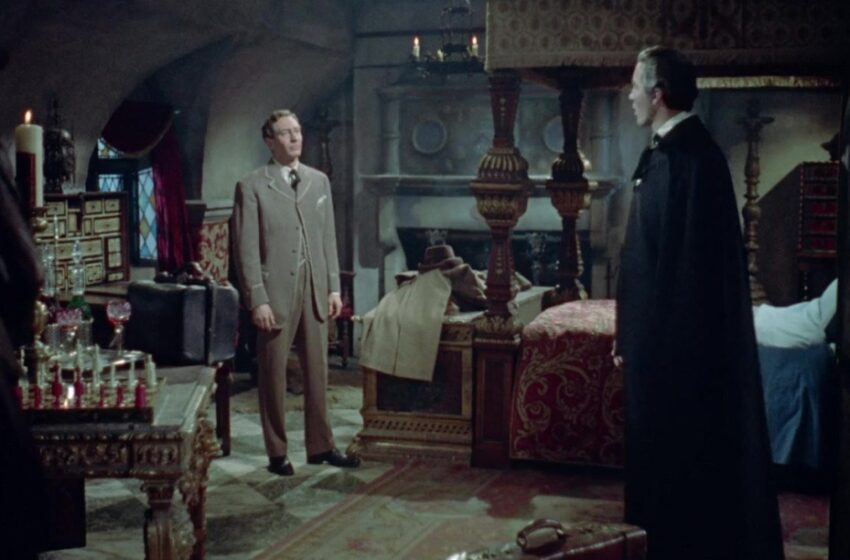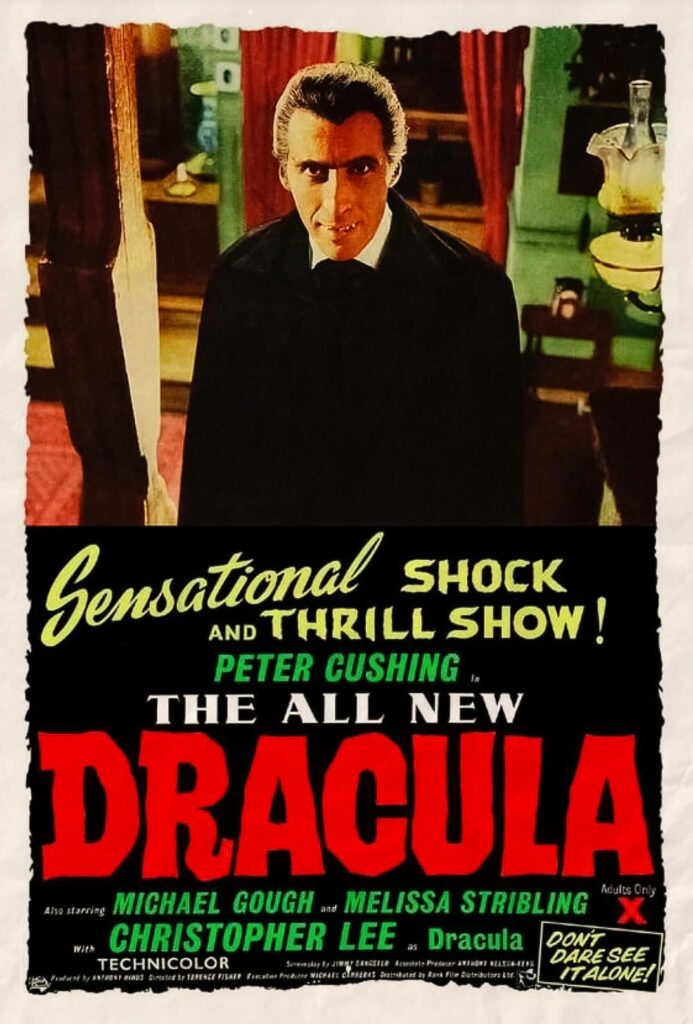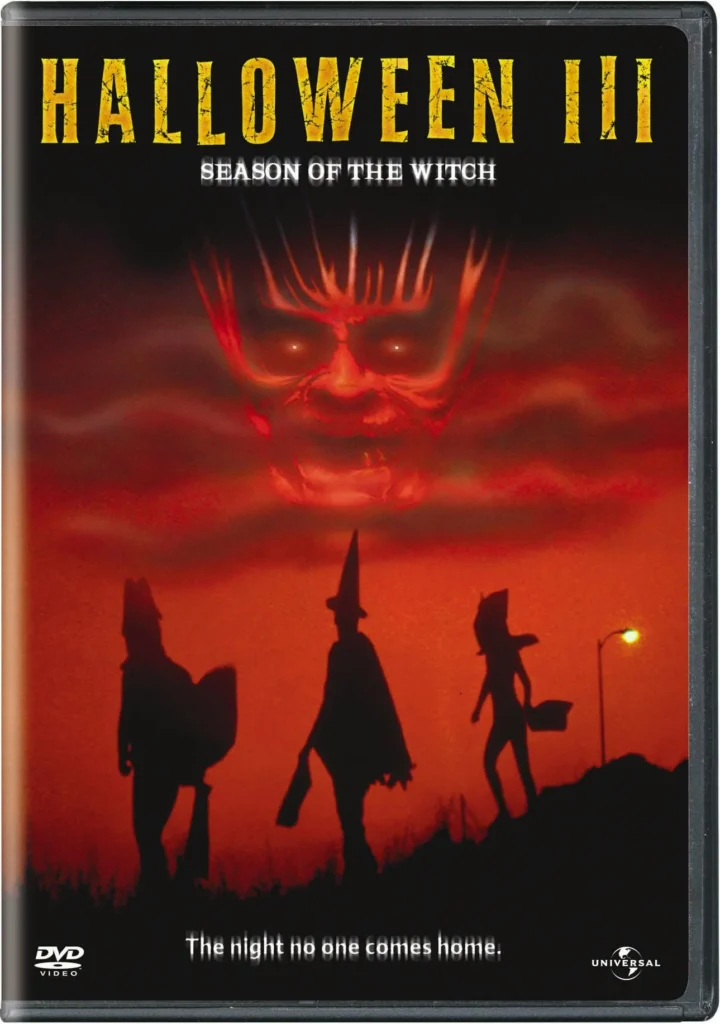
Hammer Horror’s “Dracula”: A Blood-Soaked Ballet of Gothic Cinema – Review

Hammer Horror’s “Dracula”: A Blood-Soaked Ballet of Gothic Cinema
In the realm of horror cinema, there are some names that echo through time, carving out their indelible imprints on the walls of the genre. One such name is “Dracula,” the iconic vampire, and when British production company Hammer Films decided to take a bite out of this legend in 1958, the result was a cinematic rejuvenation of the vampire mythos, setting new standards in colour, passion, and fear.
A Bold Adaptation of Stoker’s Tale:
Daring to veer from Bram Stoker’s original 1897 novel, Hammer’s “Dracula” simplified the sprawling tale and intensified the drama. Instead of a complex narrative spanning multiple locations and a vast time frame, this film version distilled the plot, focusing on Dracula’s conflict with Van Helsing and the insidious seduction of Lucy and Mina.
While purists might bristle at the deviations, this streamlining allowed for a more direct and potent narrative punch. This was not Stoker’s slow-burn Victorian horror; this was a lean and frenetic tale of bloodlust and darkness.
Christopher Lee’s Dracula: A Symphony of Silence and Stares:
Arguably one of the most significant deviations from the original text is the portrayal of Count Dracula himself. Hammer’s Dracula, as played by the indomitable Christopher Lee, is not the talkative, almost affable European nobleman of Stoker’s novel. Instead, Lee’s Count is an imposing figure: tall, brooding, and menacing. His commanding presence is further accentuated by his piercing eyes and the sparing use of dialogue.
Lee’s minimal lines in the film might seem like a directorial misstep initially, but it’s a testament to his prowess that Dracula remains an unforgettable specter throughout, with mere looks and gestures.
Van Helsing – Peter Cushing’s Methodical Vampire Hunter:
Peter Cushing, another stalwart of British horror, brings an unparalleled charm and gravitas to the role of Dr. Van Helsing. His portrayal leans less on the eccentric old professor trope and more on a methodical, almost Holmesian detective. Cushing’s Van Helsing is a man of intellect, determined and unwavering in his mission to end Dracula’s reign of terror. The interplay between Lee’s Dracula and Cushing’s Van Helsing is a masterclass in on-screen chemistry.
Production Details: The Rise of Technicolor Terror:
One of the most significant leaps Hammer made with “Dracula” was its vibrant use of color – a far cry from the black-and-white renditions audiences were used to. Blood was no longer an implied threat; it was a bright red splash across the screen, a stark contrast to the muted tones of the Gothic settings.
The film’s set designs, often created on tight budgets, were masterfully detailed, creating an atmosphere thick with dread. These settings became characters in their own right, from the foreboding castle of Count Dracula to the cozy yet vulnerable English homes.
Behind the Scenes: Charting Unknown Waters:
While “Dracula” is today heralded as a classic, its journey was anything but smooth. Hammer was charting unknown waters, daring to colorize and modernize a beloved tale. The film’s tight budget often led to inventive solutions. For instance, Dracula’s signature red eyes were achieved using hard contact lenses, which were both painful and challenging to wear. Lee’s dedication to the role saw him push through the discomfort, further solidifying his commitment to the craft.
Furthermore, the production’s decision to amp up the erotic undertones, a departure from the more subdued sexuality of previous adaptations, was a gamble. But it was a gamble that paid off, adding layers of sensuality and danger to the tale.
Impact and Legacy: A Defining Moment in Horror:
Hammer’s “Dracula” didn’t just redefine a character; it redefined an entire genre. It showed filmmakers and audiences alike that classic tales could be retold, revamped, and made relevant for new generations. The film’s success paved the way for Hammer’s subsequent forays into horror, laying the foundation for what would become the studio’s golden era.
Final Thoughts:
“Dracula” by Hammer Films is not just a retelling, but a reimagining that pulses with vivid colors, intense emotions, and a modern sensibility. It’s a testament to the timeless allure of its titular character and the ability of filmmakers to breathe new life into old legends. Whether you’re a Dracula aficionado or a casual viewer, this rendition invites you into its shadowy world with open arms and sharp fangs. The fusion of Lee’s haunting portrayal, Cushing’s determined Van Helsing, and the striking visual storytelling ensures that this “Dracula” doesn’t just live in the heart of night but also in the annals of cinematic greatness.




